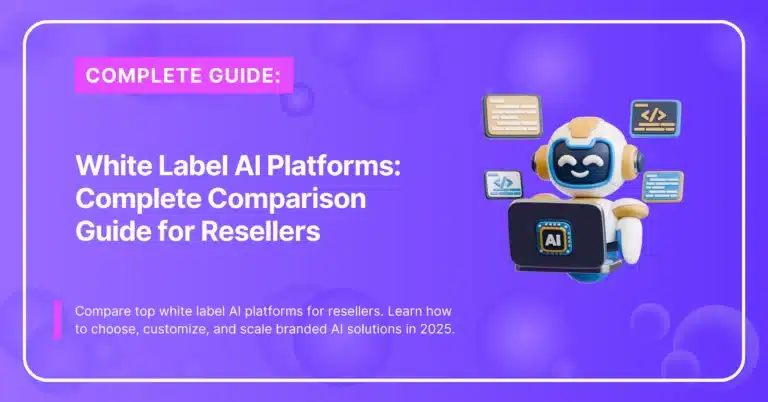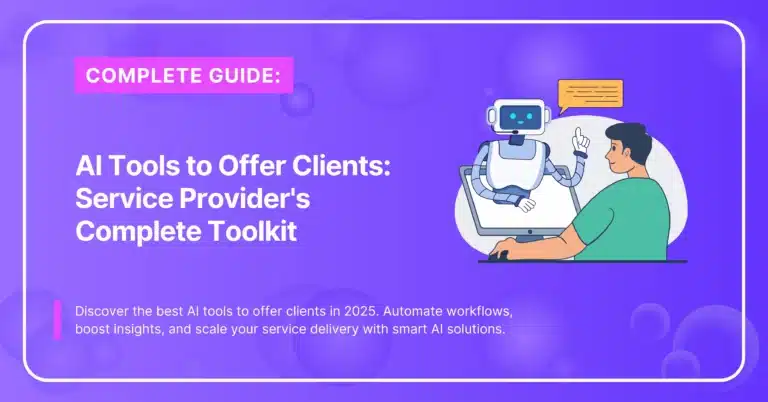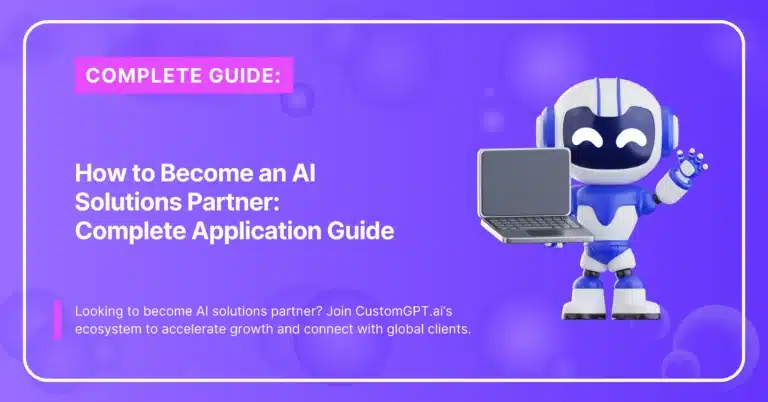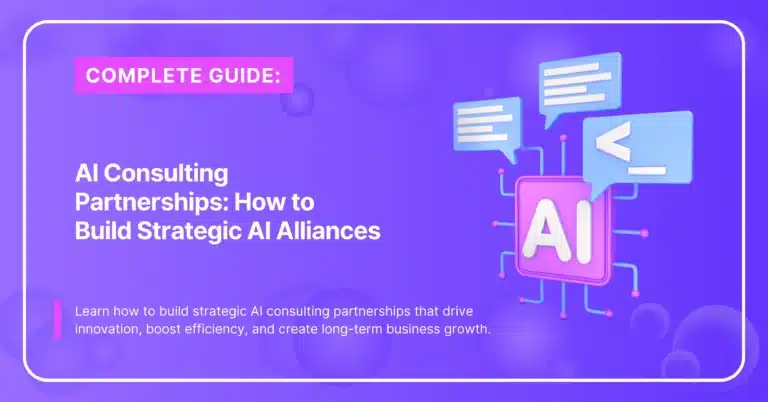In a rapidly evolving technology landscape, software companies can no longer rely solely on feature releases or one-off solutions. To stay relevant and create lasting competitive advantage, organizations must integrate artificial intelligence into their core offerings.

Make Money With AI
Join our Partner Programs!
Boost your reputation, drive revenue and grow your business with CustomGPT.ai.
Embedding AI allows businesses to unlock new capabilities—automating routine tasks, delivering personalized experiences, and driving operational efficiencies.
In this article, we will guide you through effective strategies and best practices for leveraging generative AI to drive innovation and growth.
Traditional Software Development Lifecycles
Traditional SDLCs—Waterfall or Agile—follow structured phases (requirements, design, implementation, testing, deployment). Their rigidity and reliance on predefined workflows make accommodating evolving AI requirements difficult.
Hybrid SDLC+AI introduces automated testing, dynamic feedback loops, and continuous integration pipelines tailored for model retraining. These changes enhance flexibility and integrate AI innovations smoothly into operations.
Basics of AI and Generative AI
AI finds patterns to predict or automate tasks; generative AI creates new content—text, images, code—shifting from reactive problem‑solving to proactive innovation.
At its core are large language models (LLMs) using transformer architectures to process sequences efficiently. Their success depends on high‑quality training and fine‑tuning.
Key Use Cases for Generative AI
Generative AI enhances productivity and creativity across various domains:
- Automated documentation: AI drafts and updates guides in real time, keeping resources current without manual edits.
- Intelligent assistants: AI-driven agents handle common support queries, freeing staff for complex tasks.
- Content creation: AI generates marketing copy, design mockups, and code snippets to streamline workflows.
- Personalized learning: AI tailors training materials based on individual progress and knowledge gaps.
Why Organizations Are Shifting to AI
Organizations are moving toward AI to stay competitive, improve efficiency, and deliver smarter customer experiences. Traditional software models often rely on static logic, while AI enables products to learn, adapt, and personalize responses.
Companies that embrace AI are better positioned to innovate and scale rapidly in today’s fast-changing markets.
Benefits of Becoming an AI Innovator
- Enhanced productivity through automation and smart tools
- Improved customer engagement with personalized and timely responses
- Smarter decision-making using real-time insights and predictive analytics
- New revenue streams with AI-driven features and services
- Stronger competitive edge by adopting next-generation technologies early
Common Challenges in AI Adoption
While the benefits are clear, many organizations face real hurdles when adopting AI:
- Legacy systems that are hard to integrate with modern AI workflows
- Siloed data and teams that block collaboration and efficiency
- Limited expertise in machine learning or data engineering
- Cultural resistance to new technologies and processes
- Data quality issues that reduce AI accuracy and reliability
How to Overcome These Challenges
- Use middleware and microservices to bridge legacy infrastructure
- Establish AI Centers of Excellence (CoEs) to centralize learning and expertise
- Foster a data-first culture where teams understand and value clean, usable data
- Offer targeted training programs to upskill your workforce
- Start small with clear use cases that build confidence and demonstrate impact
Roadmap: How to Move from Software Provider to AI Innovator
Becoming an AI innovator doesn’t always mean building everything in-house. For many software providers—especially those with established platforms—it makes more sense to embed intelligence by working with trusted AI partners.
Programs like the CustomGPT.ai Solution Partner Program help you add smart features quickly without building models from scratch. Whether through licensing, white-labeling, or API integration, you can evolve your platform while focusing on your core business.
These steps outline how to move from a traditional software model to one powered by embedded, customizable AI—from partners or in-house—at your own pace.
Step 1: Evaluate Partnership Opportunities
Before building your own AI, consider strategic partnerships. Many software providers speed up their innovation by integrating third-party AI solutions. Partnering allows for faster deployment, lower risk, and access to mature technology.
Programs like the CustomGPT.ai Solution Partner Program offer white-labeled models that can be embedded directly into your product stack.
Step 2: Embrace an AI Mindset
Begin with a shift in perspective. AI is not just a feature—it is a foundation for innovation and growth. Leaders should clearly define how AI will improve customer experience, streamline operations, or unlock new value.
Making this part of the company’s overall strategy helps everyone understand its importance.
Step 3: Audit Your Capabilities
Evaluate your current technology, data, and skills. Take stock of your tools, platforms, and team expertise. This reveals what you already have, where you need to grow, and how ready you are to start using AI effectively.
Step 4: Define Strategic Use Cases
Choose areas where AI can solve real problems. These might include automating support tasks, improving personalization, or helping users find insights faster. Start small with a few well-scoped ideas that can deliver clear value quickly.
Step 5: Modernize Your Architecture
Old systems often aren’t flexible enough for AI. Move toward a modular setup using microservices. This makes it easier to test, improve, and expand your AI without disrupting the rest of your product.
Step 6: Prepare and Protect Data
Build strong pipelines for collecting and cleaning your data. Make sure your systems handle data securely and meet privacy requirements. Good data is the backbone of effective AI.
Step 7: Build or Collaborate with Cross‑Functional Teams
If building AI in-house, create teams that blend product, engineering, and data expertise. If you’re partnering, coordinate internal teams with your AI provider to ensure smooth integration.
Strong collaboration keeps the product focused on user needs while making the most of external expertise.
Form teams that bring together developers, data scientists, product leads, and business experts. Encourage them to work closely so that AI development and deployment stay aligned with user and business needs.
Step 8: Prototype and Validate
Start with a pilot. Test AI on a small feature or a limited group of users. Use feedback and performance results to refine the model before you roll it out more widely.
Step 9: Scale with Automation
Once your pilot is working well, use automation to keep it running smoothly. Set up pipelines that test, retrain, and monitor models as part of your development cycle.
Step 10: Cultivate an AI‑Ready Culture
Help your teams build confidence with AI. Provide training, encourage experimentation, and recognize small wins. A culture of curiosity and learning makes transformation easier.
Step 11: Measure Impact and Iterate
Track how well your AI efforts are performing. Use both data and user feedback to decide what to improve, keep, or remove. Continual learning helps make your AI smarter and more useful.
Step 12: Evolve Your Business Model
Whether you’ve built AI capabilities or partnered to embed them, AI opens the door to new business models. You might offer premium AI-powered features, usage-based pricing, or resell embedded tools through white-label partnerships.
Let the value you deliver shape your revenue strategy.
As your AI matures, consider new business models. You might offer premium features, usage-based pricing, or tools that others can build on. Let the value you deliver guide how you charge and grow.
Building Ethical and Responsible AI
Integrating AI means taking responsibility for how it’s used. Ethics should be a core part of AI design.
- Build systems that are inclusive and avoid bias.
- Be transparent about how your AI makes decisions.
- Ensure user privacy and data protection.
- Audit and improve models regularly for fairness and reliability.
Choosing the Right Tools and Partners
Choosing AI tools and vendors wisely makes transformation smoother and more sustainable.
- Select tools that integrate easily with existing systems.
- Use platforms designed for scalability and regular updates.
- Work with vendors who offer clear support and documentation.
- Consider open-source solutions for flexibility.
Real-World Use Cases to Inspire Innovation
Learning from others can guide your own AI strategy. Common use cases include:
- Customer support: Use chatbots to handle common questions instantly.
- Marketing and sales: Deliver personalized content based on behavior and preferences.
- Operations: Automate document processing and logistics planning.
- Product development: Use AI to gather insights from user feedback and usage data.
Measuring ROI and Market Success
Understanding how AI contributes to success requires ongoing measurement and adaptation.
- Use adaptive tracking tools to monitor how AI performance evolves over time.
- Evaluate success through both quantitative results like savings and improvements, and qualitative outcomes like customer feedback.
- Apply A/B testing methods to understand how AI features impact real-world usage and results.
Misconceptions That Slow AI Success
Success in AI transformation requires more than just technology.
- Cultural resistance and fragmented data often create major roadblocks.
- Generic models must be fine-tuned to avoid irrelevant or inaccurate results in real-world applications.
- Clear communication and team alignment are as important as model accuracy.
Common Pitfalls in AI Adoption
Some missteps can derail AI projects early on. These include:
- Poor quality, unstructured, or inconsistent data that leads to model failure.
- Lack of domain-specific training, making models less relevant.
- Skipping iterative validation, resulting in errors or bias over time.
Frequently Asked Questions
What are the key steps for transitioning to an AI‑driven business model?
1. Assess current capabilities and data readiness.
2. Define strategy and scalable AI use cases (predictive analytics, generative content).
3. Form cross‑functional teams.
4. Invest in data governance.
5. Start with proofs of concept; iterate and scale.
When should a software solution provider partner versus building its own AI capability?
Partnering is often the best choice when speed, efficiency, and proven results are important—especially if your team is not deeply experienced in AI or you want to avoid the long development cycle of building from scratch.
Solution partner programs, like CustomGPT.ai, allow you to white-label powerful AI tools into your existing software quickly and securely. Building in-house can be valuable if you have strong AI resources and need deep customization, but most companies see faster ROI through partnerships.
How does white-label licensing work for AI modules inside existing SaaS platforms?
White-label licensing allows you to embed pre-built AI modules into your product and brand them as your own. It helps speed integration while offering flexibility in design and deployment.
What revenue impact have peer providers reported after adding AI?
Many software providers have reported increased user engagement, premium upsells, and new customer acquisition after integrating AI features—especially when they solve pain points or create real value.
How are model updates and security patches handled by the vendor?
Reputable AI vendors provide automated model updates, performance improvements, and security patches as part of their support plans. Always confirm how and when updates are deployed.
Which support tiers exist for 24×7 enterprise environments?
Vendors often offer tiered support—ranging from business-hours support to 24×7 enterprise-grade service with dedicated response teams and uptime guarantees.
Conclusion
Transforming from a software provider to an AI innovator is a strategic shift that requires both technical evolution and cultural change. By following a structured approach, businesses can unlock the full potential of AI.
The journey may involve new tools, new skills, and new ways of thinking—but the rewards are well worth the effort. Start small, stay flexible, and focus on creating real value with every step.
Become a partner and start building AI solutions faster.
Partner solutions: Transform client outcomes with zero R&D effort.
Simplify your operations with AI solutions designed to deliver measurable results.
Trusted by thousands of organizations worldwide








